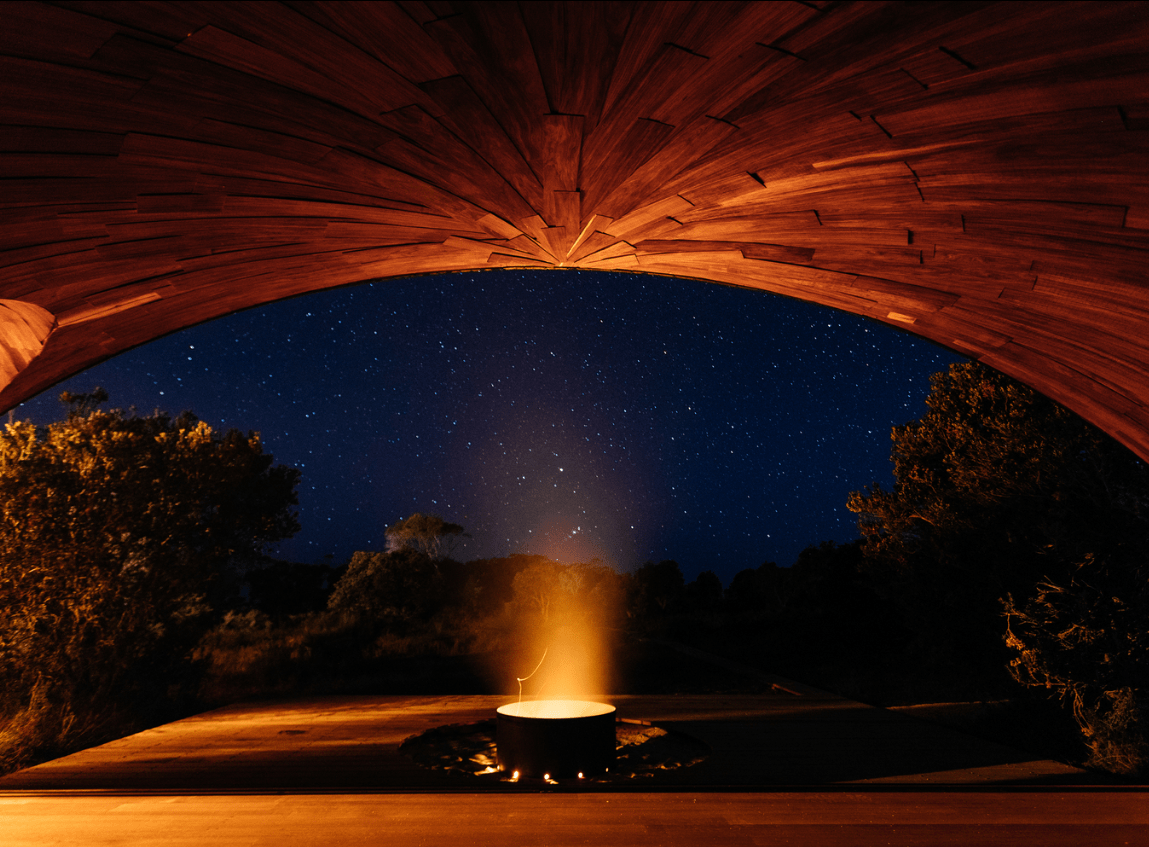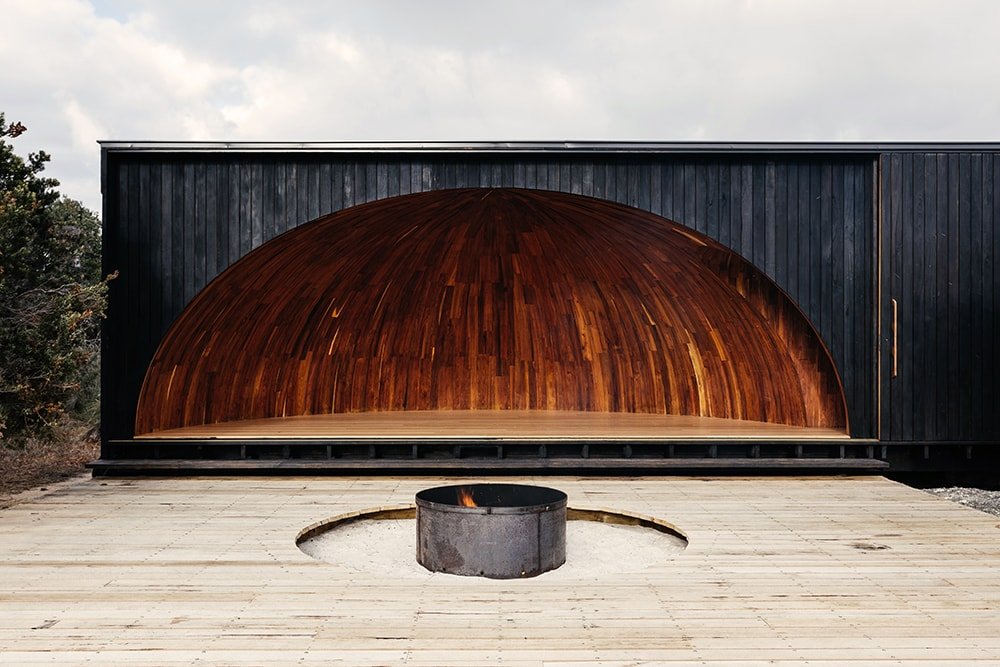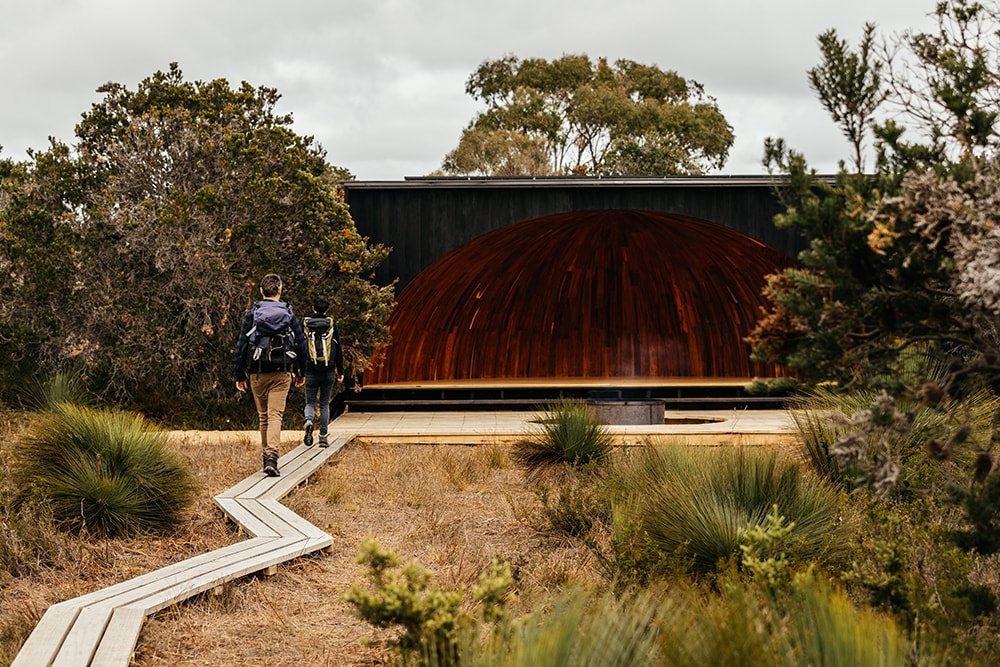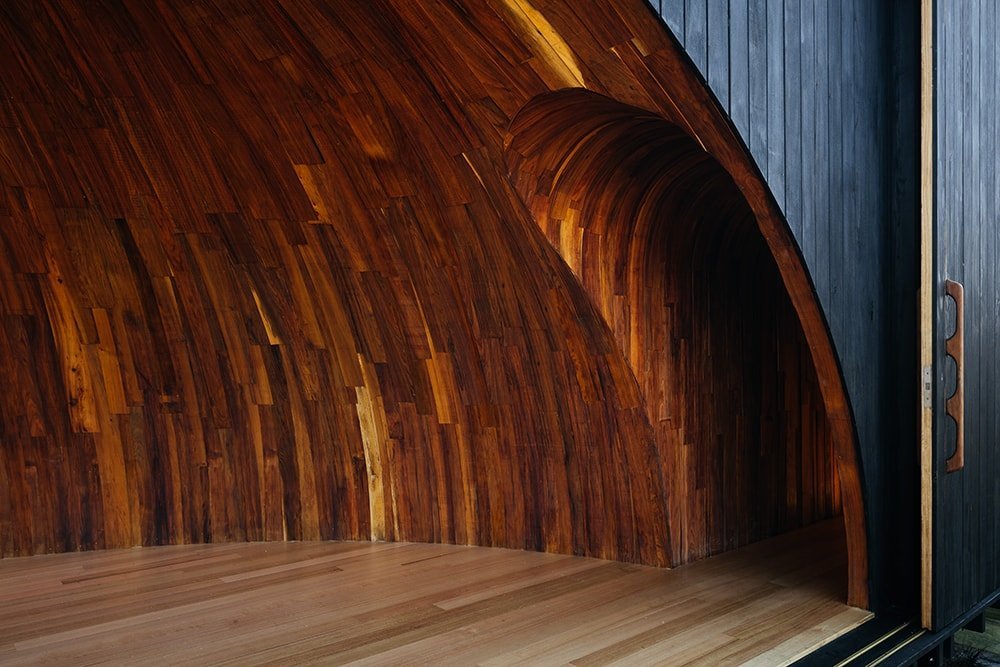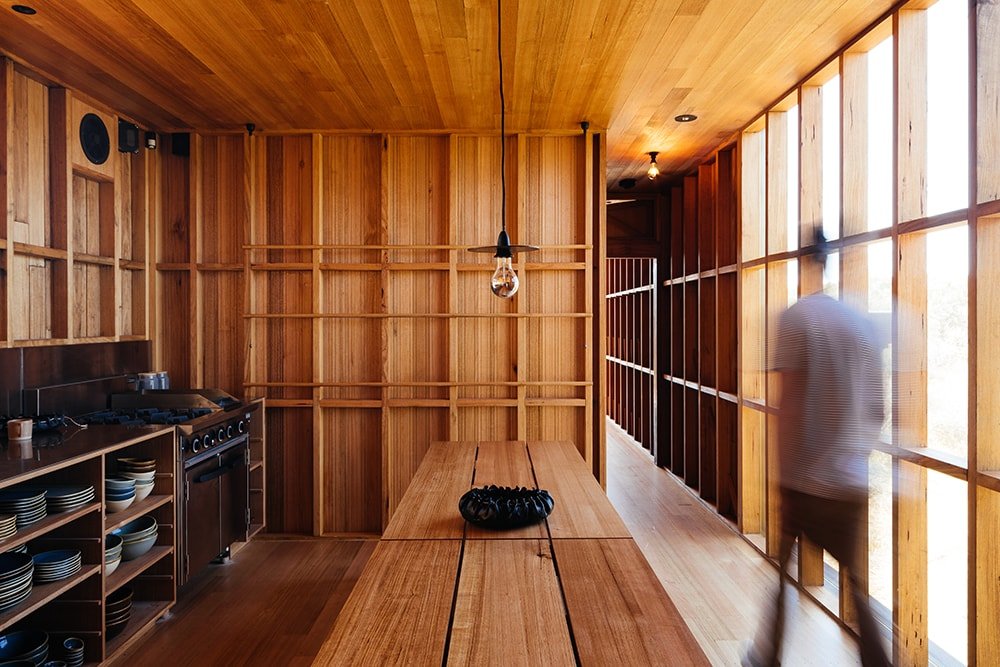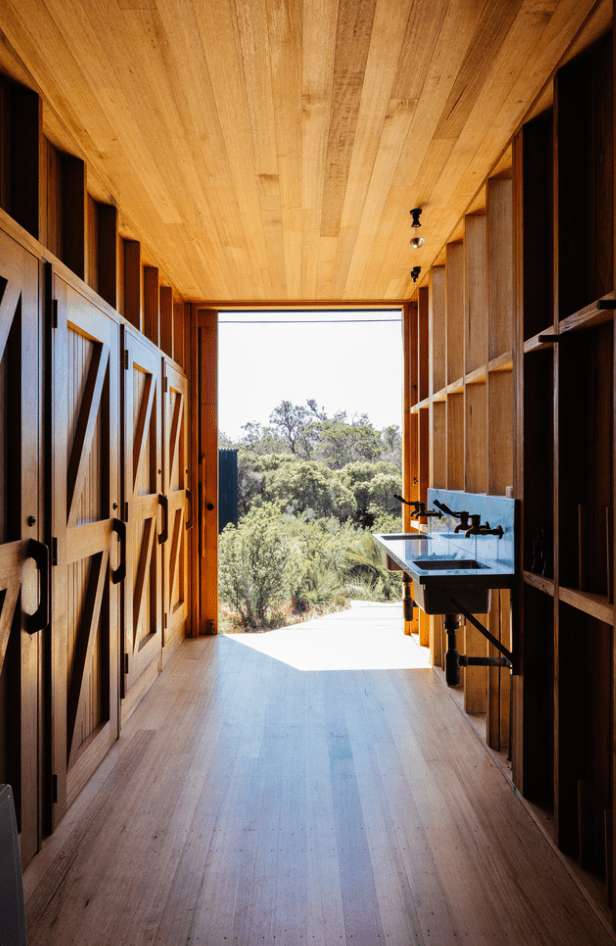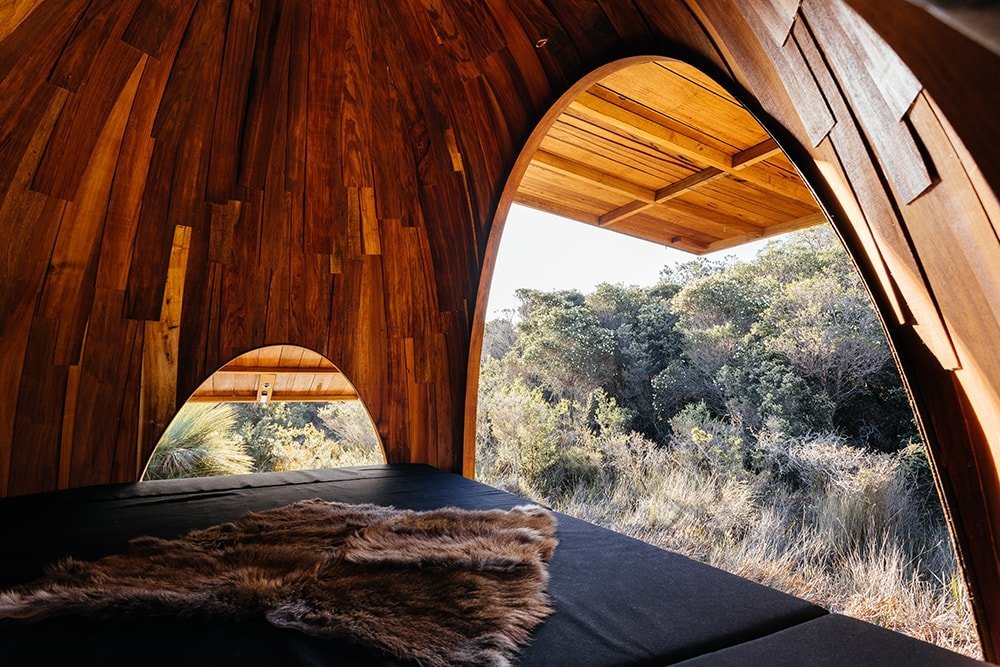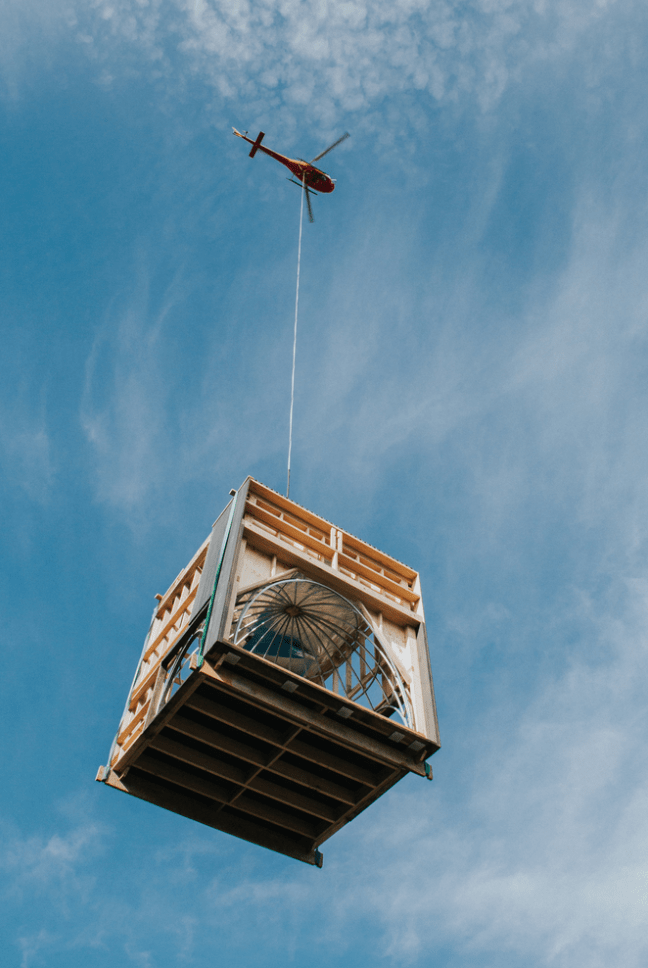Walking together in lightness

wukalina/Mt William National Park sits on the north-eastern tip of Tasmania.
Here, beyond the beach and among the banksias, you’ll find krakani lumi. Designed to leave as small a footprint on this significant cultural place, the all-timber standing camp is part of the Aboriginal Land Council’s wukalina walk, a four-day experience through the wilderness of the area.
Designed over a number of years by the Hobart-based firm Taylor and Hinds, the wukalina project was developed in close conversation with the Indigenous owners of the land (Tasmania’s palawa people), and the Aboriginal Land Council. The camp sits at the northern end of the spectacular Bay of Fires. The wukalina walk is an Aboriginal owned and operated guided walk that takes visitors around the larapuna and wukalina areas. It’s designed as a cultural experience where walkers experience the landscape through the culture and history of the palawa people.
You approach the site from the sand dunes of a nearby beach, and it isn’t visible through the coastal scrub until you’ve arrived — the seven structures of krakani lumi are cradled by surrounding silver banksia, Banksia marginata. The resting place, as its name translates, offers a communal site for gathering and a series of pavilions in which walkers sleep. Drawing inspiration from the half-dome forms of ancient Tasmanian Aboriginal shelters, the insides of the structures have curved walls. The exterior of each is clad in charred Tasmanian timber, which gives them the appearance of melting into the surrounding dark bushland. The buildings themselves have been designed to minimise impact to native flora and fauna, and in fact encourage it; small hollows within the wall cavities invite occupation by local birds and marsupials.
Lined in blackwood, the dome includes essential amenities, bedding that’s supplemented with quilted wallaby furs (known as ‘reore’) and scented with the essential oil of the local swamp paperbark, maleleuca ericifolia, a flower that was traditionally used to aid sleep.
The whole project was also detailed upon a timber aesthetic. This was vital because the palawa people wanted as small a footprint as possible in this special place.
In order to avoid bird strikes, solid panels and screens have been used in place of window glass, while nooks for native animals are secreted within walls. Charred black silvertop ash exteriors merge into the surrounding foliage or disappear completely with the closure of a sliding door or awning. From floor to wall to ceiling, from exposed studs and dowels to window frames and shutters, the camp site’s central eating and bathing pavilion is entirely lined in locally sourced Tasmanian oak.
In situating the campsite, not a single tree was removed or cut and all structures were airlifted into place by helicopter. The entire site is off-grid and powered by a solar array with diesel generator backup and uses rainwater.
For more on this incredible project, head to Make It Wood.
Note: All timber used in this project is Programme for the Endorsement of Forest Certification (PEFC) certified, with chain of custody.
